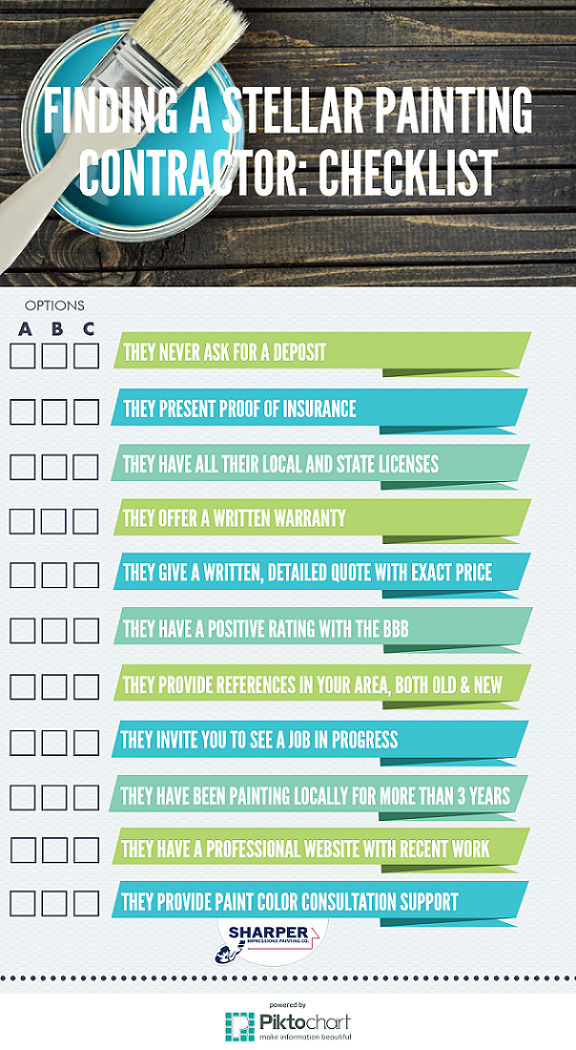The Effectiveness Of Your Industrial External Painting Project Is Very Closely Linked To Weather Conditions-- Learn Exactly How It Can Either Support Or Hinder Your Desired Results
The Effectiveness Of Your Industrial External Painting Project Is Very Closely Linked To Weather Conditions-- Learn Exactly How It Can Either Support Or Hinder Your Desired Results
Blog Article
Uploaded By-Vilstrup Dohn
When you're intending a business outside painting job, do not underestimate the influence of weather on your results. You require to take into consideration factors like temperature level, moisture, and rainfall, as they can make or damage your paint job. For example, did you understand that optimal conditions call for particular temperature varieties and moisture levels? Stopping working to keep an eye on these aspects can cause irregular coatings and even damage to fresh paint. Understanding these aspects is essential to accomplishing a durable, professional result. So, what certain climate condition should you watch out for?
Temperature level Considerations
When it concerns commercial external painting, temperature plays a vital role in the outcome of your task. If you're painting in severe warm, the paint can dry out as well promptly, resulting in issues like poor attachment and uneven coatings. You want to aim for temperature levels between 50 ° F and 85 ° F for the best outcomes. Listed below 50 ° F, paint might not treat properly, while above 85 ° F, you take the chance of blistering and splitting.
Timing your task with the right temperature levels is vital. Start your job early in the early morning or later in the mid-day when it's cooler, particularly during warm months.
Also, think about the surface area temperature level; it can be considerably higher than the air temperature level, particularly on bright days. Use a surface thermometer to examine this prior to you start.
If temperature levels are unpredictable, keep an eye on the weather report. Unexpected temperature declines or heat waves can thwart your plans. You don't wish to begin painting just to have the conditions alter mid-project.
Humidity Levels
Moisture levels dramatically impact the success of your industrial external painting project. When the moisture is expensive, it can prevent paint drying out and treating, resulting in a series of concerns like poor bond and complete top quality.
If you're intending a job throughout moist problems, you may locate that the paint takes longer to completely dry, which can extend your job timeline and boost costs.
On the other hand, reduced moisture can likewise pose difficulties. https://findapainternearme43219.blogoxo.com/33424753/all-set-for-a-home-upgrade-learn-about-the-trendiest-indoor-paint-colors-that-will-rejuvenate-your-environments-and-elevate-your-design-perceptiveness may dry too swiftly, stopping appropriate application and causing an uneven finish.
You'll wish to keep an eye on the moisture levels closely to guarantee you're functioning within the excellent variety, commonly in between 40% and 70%.
To obtain the very best outcomes, take into consideration making use of a hygrometer to determine humidity before beginning your job.
If you discover the levels are outside the ideal variety, you might require to adjust your schedule or pick paints designed for variable problems.
Constantly consult the producer's guidelines for specific suggestions on humidity resistance.
Precipitation Influence
Rain or snow can significantly interrupt your industrial exterior painting strategies. When precipitation takes place, it can wash away fresh used paint or create an unequal coating. Ideally, you intend to select days with dry weather condition to make certain the paint adheres appropriately and remedies effectively. If you're captured in a rain shower, it's ideal to halt the job and wait on conditions to boost.
Additionally, snow can be a lot more destructive. https://www.homesandgardens.com/interior-design/paint-finishes does it develop a damp surface, but it can additionally lower temperature levels, making it tough for paint to completely dry. This can cause problems like peeling off or blistering down the line.
It's essential to inspect the weather report before starting your job. If rainfall or snow is predicted, take into consideration rescheduling.
Constantly bear in mind to enable adequate drying time in between layers, particularly if the weather continues to be unforeseeable.
Final thought
In conclusion, watching on the weather condition is essential for a successful industrial external paint project. By keeping an eye on temperature level, humidity, and precipitation, you can make certain the most effective problems for application and treating. Bear in mind to plan your job around favorable weather and constantly follow supplier standards. With the best strategy, you'll achieve a lasting, beautiful finish that can hold up against the components. Don't let the climate capture you off-guard-- remain informed and paint wise!
